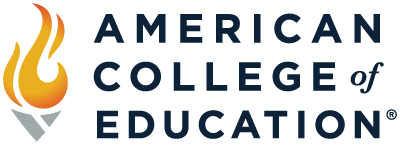
One of my weaknesses as a teacher was trying to cram too much into a 47-minute period. When I looked up at the clock and realized we had reached the end of our time, I would even attempt to talk over students as they scrambled to clean up in order to get to their next class on time. It wasn’t good for the lesson, it wasn’t good for the learning and it definitely didn’t support a relaxed or a productive educational culture.
Fast forward five years, a colleague mentioned and the concept piqued my interest. Over time, I have created my own variation of it, but I found that general structure works well whether you’re working with young people or adults, in a classroom or during a meeting, and whether it’s a quick lesson or a longer training session. Not only does it help develop , but it helps maintain clarity (and sanity!) for the facilitator.
CASEL provides multiple ideas and strategies in its playbook. Here are the slight adjustments I’ve made while maintaining the basic solid structure:
Step One: Start the lesson/training with a method to ENGAGE the participants. This is your way to hook the attention of the participants and get them to start thinking about the learning ahead. A traditional “” or “bellringer” works well to activate the learning brain and excite your participants. Start with relevant content that makes it simple for everyone to participate or is particularly entertaining, then gradually work toward the new learning or more serious content. For example, start with “this or that” type debatable statements, ask participants to write about or discuss a question, or view a quick video clip. Humor is typically effective, so you could always share a memorable educational joke to start.
Step Two: During the lesson/training, make sure to incorporate INTERACTion. Don’t just talk at the participants for an extended period of time. Incorporate some in order to encourage conversation and interaction between participants. These are meant to be used for math instruction, but the concepts work for virtually any content area.
Although the , I aim for trying to break lessons up into no more than fifteen minutes of new learning. Clearly, attention span is dependent on multiple factors, and the intensity of the learning should be taken into consideration when determining when participants need a break. And . Some form of interaction gives learners time to process new information, make connections to prior learning, formulate their thinking and solidify learning.

Step Three: Make sure participants have an opportunity to REFLECT on a lesson or training. In the moment, it isn’t always recognized how much has happened. Giving structured time to reflect can help participants consider the key points to take away from the experience and help reinforce the new learning without losing sight of what needs to be remembered. And taking this time to purposefully reflect can help teach students to self-monitor their learning process. Providing scaffolds and supports, such as a , can help support reflection throughout a lesson. Check out these .
Step Four: Taking time to make CONNECTions can help close out a lesson or training and provide a purposeful start to the next session. They might consist of or connecting one lesson/session to the next. is helpful for making the content more meaningful and memorable. And making connections to where and how that content occurs in the is particularly engaging for helping students see the purpose in what they’re learning. When I initially learned of CASEL’s Signature Practices, I was a little unimpressed by the simplicity of it. But it’s that simplicity that makes it consistently feasible and easy to remember. I intentionally plan lessons and training sessions with people of all ages to ensure they have time to reflect and connect. It increases clarity of my instruction, enhances learning and improves retention. Participants become familiar with the routine, and it helps contribute to a more positive overall learning experience and environment.
Enhance your teaching with the latest instructional strategies. Explore ������Ƶ’s fully .

